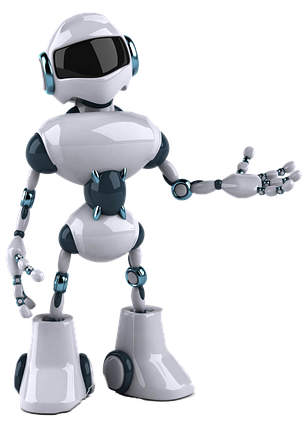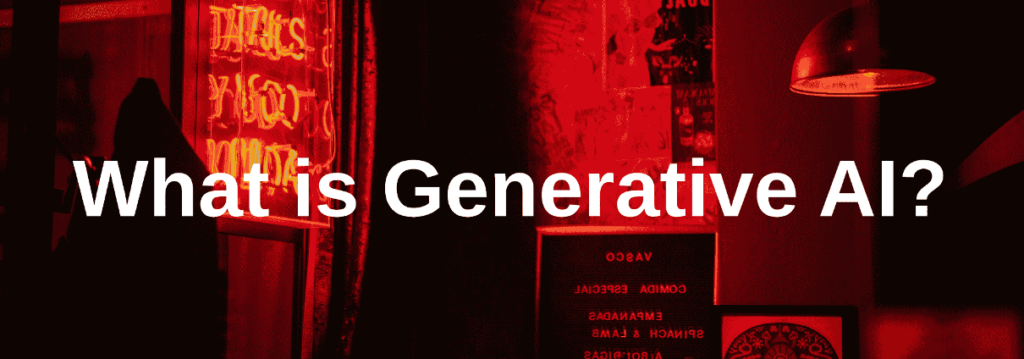Generative AI, a branch of artificial intelligence (AI), is captivating industries and reshaping how we think about creativity, content generation and problem-solving. Unlike traditional AI models that rely on recognizing patterns, generative AI can create new, original data, such as images, text and even music, based on vast datasets it’s trained on. This breakthrough has positioned generative AI as a major driver of innovation, sparking new opportunities and ethical conversations across fields like art, technology and business.
In this post, we’ll explore What is Generative AI? 7 Best Generative AI Tools, How to use them?, How Generative AI works?, its real-world applications and the ethical considerations it raises.
What is Generative AI?
Generative AI refers to AI models that can produce new content or predictions by learning from and processing large datasets. The defining feature of generative AI models is their ability to generate rather than merely recognize patterns, meaning they can create new and unique content that resembles the data they’ve been trained on.
Some of the most well-known generative models include:
- Generative Adversarial Networks (GANs): GANs consist of two networks—the generator, which creates new data and the discriminator, which evaluates the quality of this data. This setup enables GANs to produce high-quality images and has been a breakthrough in realistic image generation.
- Transformer-based Models: Language models like OpenAI’s GPT and Google’s BERT are transformer models that generate human-like text by predicting sequences of words, making them ideal for tasks like writing, translating and answering questions.
- Variational Autoencoders (VAEs): VAEs are often used in image generation, providing a way to generate new images by learning a compressed version of the input data and then reconstructing it.
How Does Generative AI Work?
Generative AI is powered by machine learning techniques, primarily deep learning. Here’s a breakdown of how these models learn and generate new data:
- Training Data Collection: The model is fed a massive dataset related to its task, such as millions of images, text samples or music tracks. This data provides the raw material for the AI to learn patterns, features and relationships.
- Pattern Recognition and Feature Extraction: During training, the AI learns the fundamental features of the data, like shapes and colors in images or grammar and syntax in text. It identifies the key elements and structures that make a given piece of data authentic to its category.
- Generation Process: The trained model can then use what it’s learned to create new data. By mixing and matching features and patterns, it generates content that closely resembles the original training data but isn’t an exact copy.
- Evaluation and Refinement: Advanced generative models like GANs further refine their output by evaluating it against another model (the discriminator). This process results in content that’s continually improved to be more realistic and accurate.
Applications of Generative AI

Generative AI is not only confined to producing art or text. Its applications span several industries, revolutionizing how businesses and creators approach innovation and content production.
1. Entertainment and Media
- Content Creation: Writers, marketers, and content creators use generative AI to draft copy, create dialogue or even generate news articles. This streamlines content creation, allowing creators to focus on fine-tuning and creativity.
- Game Development: Generative AI is used to create character designs, backdrops and even plotlines, enriching the gaming experience without the need for extensive manual design.
2. Art and Design
- Digital Art Generation: AI-generated art has gained popularity, with platforms and artists using AI tools to create unique pieces of art, often blending traditional and digital aesthetics in unexpected ways.
- Graphic Design: Generative AI can assist designers by providing a base layout, color scheme, or even complete visual templates, which can be adjusted and refined to meet a client’s specific needs.
3. Healthcare and Biotechnology
- Drug Discovery: By simulating how different compounds interact, generative AI can help researchers identify promising new drugs faster than traditional methods.
- Medical Imaging: Generative AI is used to enhance medical images, helping doctors make more accurate diagnoses and offering a clearer view of complex scans, like MRIs and CT scans.
4. E-commerce and Marketing
- Personalized Advertising: Generative models analyze user behavior and generate personalized advertisements tailored to individual preferences, boosting engagement and conversions.
- Virtual Try-Ons: Generative AI enables virtual try-ons by simulating how clothes or accessories would look on a customer, improving online shopping experiences and reducing returns.
Ethical and Social Implications of Generative AI
While generative AI is undoubtedly transformative, it brings complex ethical and social concerns to the forefront.
1. Copyright and Intellectual Property
- Since generative AI models are trained on large datasets that may include copyrighted material, there’s an ongoing debate about the ownership of AI-generated content. Artists and creators have raised concerns about AI models using their work without compensation or acknowledgment.
2. Misinformation and Deepfakes
- Generative AI’s ability to produce realistic but fake content has led to the rise of deepfakes, where people’s likenesses are superimposed onto other footage, creating misleading videos. This has serious implications for media trust and personal privacy, highlighting the need for responsible AI usage and regulation.
3. Bias and Fairness
- Generative AI models can inadvertently reproduce and amplify biases present in their training data. For instance, if an AI is trained on biased datasets, it may produce outputs that reflect or reinforce those biases, posing risks in applications like hiring or law enforcement.
4. Loss of Human Jobs
- The efficiency and automation offered by generative AI could displace jobs, especially in sectors involving repetitive or creative work. While AI can enhance productivity, there’s a concern about job loss and the need for upskilling workers to thrive in an AI-driven world.
The Future of Generative AI: What Lies Ahead?
The future of generative AI looks promising and expansive. As technology advances, we can expect generative AI to become more sophisticated, producing content that’s even closer to human creativity. Moreover, regulatory efforts may address ethical concerns, balancing innovation with societal responsibility. Generative AI is likely to continue transforming industries and its full impact will depend on how it’s integrated with human creativity, ethics and governance.
Generative AI Tools and How to Use Them?

Generative AI tools have revolutionized content creation, offering solutions that can produce high-quality text, images, music and even code. These tools empower users to generate original content with minimal input, enhancing creativity, productivity and efficiency across industries.
Here’s a detailed look at some of the most popular generative AI tools, their unique features and practical steps on how to use each one.
1. OpenAI’s ChatGPT
ChatGPT, based on OpenAI’s GPT-4 model, is a versatile language model designed for text-based tasks, including writing, answering questions, tutoring, and summarizing. This tool is widely used for content generation, idea brainstorming, language translation and even conversational applications
How to Use ChatGPT?
- Access: Head to OpenAI’s ChatGPT site and sign up or log in. ChatGPT is available both as a free model and in paid versions which provide access to more advanced models.
- Input a Prompt: Begin by typing a prompt in plain language, describing what you need. You can be as specific or broad as you like.
- Refine the Output: If the output isn’t quite right, use follow-up prompts to clarify or ask ChatGPT to make adjustments.
- Example Use Cases:
- Writing Assistance: Provide a topic and ask ChatGPT to generate a blog post, article outline or social media post.
- Customer Support: Integrate ChatGPT into customer support systems to answer common questions or provide information.
- Coding Help: Developers can use ChatGPT to generate code snippets, troubleshoot errors or explain programming concepts.
2. DALL-E 3
DALL-E 3, another tool by OpenAI, is an advanced image generation model that creates images from text descriptions. It excels at creating photorealistic images, digital art and illustrations, making it ideal for designers, content creators and marketers.
How to Use DALL-E 3 ?
- Access: Use OpenAI’s platform or connect via ChatGPT Plus and Pro versions for easy integration.
- Input a Description: Write a detailed description of the image you want. Be specific with attributes like style, color, lighting and details.
- Adjust the Output: If the result isn’t quite right, refine your description and try again. Adjustments in descriptive details can significantly improve image accuracy.
- Example Use Cases:
- Marketing: Generate unique visuals for advertisements, product images or promotional materials.
- Web and Graphic Design: Create custom illustrations, backgrounds and concept art for projects.
- Social Media Content: Quickly generate eye-catching visuals to accompany social media posts and campaigns.
3. Midjourney
Midjourney is a specialized AI tool focused on producing unique, artistic images from textual prompts. It’s known for its ability to create visually stunning and stylized art, making it popular among artists and designers.
How to Use Midjourney?
- Access: Midjourney operates via Discord. Visit Midjourney’s website to join their Discord server.
- Enter Commands in Discord: Type
/imaginefollowed by your image description in the designated Midjourney channels. Midjourney processes the prompt and generates an image based on it. - Experiment with Variations: Midjourney allows users to tweak and modify generated images. Try changing parameters like aspect ratio, style and color for different effects.
- Example Use Cases:
- Concept Art: Quickly create unique and creative artwork concepts for projects.
- Branding: Design logos, business card art or brand assets with specific aesthetics.
- Illustrations: Generate book covers, poster designs and other illustrations with ease.
4. RunwayML
RunwayML is a versatile tool that combines text, image, and video generation capabilities. With tools for background removal, object tracking and text-to-video generation, RunwayML is ideal for video editors, visual content creators and digital artists.
How to Use RunwayML?
- Access: Sign up on RunwayML’s website and explore its tools for video and image generation.
- Select a Feature: Choose from various tools, like “Green Screen” for background removal or “Text to Video” for generating videos based on prompts.
- Customize and Export: After applying the desired effects or generating content, you can fine-tune settings (like frame rate and resolution) and export the final video or image.
- Example Use Cases:
- Video Production: Use tools like background replacement, motion tracking and object recognition to streamline video production.
- Social Media Content Creation: Create short, engaging videos quickly with high production quality.
- Marketing and Advertising: Generate promotional videos or animations using AI-generated visuals and text-to-video options.
5. Jasper.ai
Jasper.ai is an AI-driven writing assistant optimized for business content creation. It’s used to generate product descriptions, blog posts, ad copy, and social media posts, tailored to different brand voices and styles.
How to Use Jasper.ai?
- Access: Visit Jasper.ai’s website to sign up and access the tool.
- Choose a Template: Jasper offers templates for various content types, like blog posts, product descriptions and ad copy.
- Enter Details: Input keywords, the tone of voice, and other details to customize your content.
- Generate and Refine: Jasper will create content based on your inputs. You can regenerate parts of the text or further edit to fit your needs.
- Example Use Cases:
- E-commerce: Create detailed product descriptions optimized for search engines.
- Social Media: Generate posts, captions, and promotional content.
- Blog Writing: Speed up blog post creation with outlines, introductions or full drafts.
6. Stable Diffusion
Stable Diffusion is an open-source AI model designed for high-quality image generation. Known for producing detailed and high-resolution images, it’s a great tool for artists, designers and developers looking to create or customize digital visuals.
How to Use Stable Diffusion?
- Access: Stable Diffusion can be run locally (if you have the right hardware) or accessed through platforms like DreamStudio.
- Input a Text Prompt: Provide a detailed description of the image you want. Stable Diffusion allows for complex prompts that yield highly realistic outputs.
- Adjust Settings: Customize parameters like image resolution, sampling steps and style preferences to get the desired output.
- Example Use Cases:
- Concept Art: Develop unique concepts for films, games or personal projects.
- Digital Artwork: Create and experiment with visual styles for digital art.
- Product Design: Generate realistic product mock-ups or design concepts.
7. Soundraw
Soundraw is a generative AI tool for music creation, ideal for content creators, game developers and anyone needing royalty-free music. It allows users to create and customize music tracks based on their preferred style, tempo and mood.
How to Use Soundraw?
- Access: Visit Soundraw’s website to create a free account and explore the platform.
- Select Preferences: Choose the genre, tempo, and mood you’re looking for. Soundraw will generate music tracks based on these parameters.
- Customize the Track: Adjust elements such as length, intensity, and individual instruments to match the desired style.
- Download: Once satisfied, download the music for use in videos, games or other projects.
- Example Use Cases:
- YouTube Videos: Add custom music to videos without worrying about copyright issues.
- Game Development: Generate unique background scores that enhance the gaming experience.
- Marketing Videos: Create professional soundtracks for promotional materials.
Conclusion
Generative AI is revolutionizing the boundaries of technology and creativity. With its ability to generate original content, it has far-reaching implications for various industries and promises to unlock unprecedented levels of innovation. However, as with any powerful technology, it’s crucial to approach generative AI with a balanced perspective, recognizing its potential and addressing its challenges. As we look to the future, the journey of generative AI is only beginning, offering both exciting possibilities and a responsibility to guide its growth wisely.
Also Read –


Pingback: What is Artificial Intelligence? Concept, Applications and Future Prospects